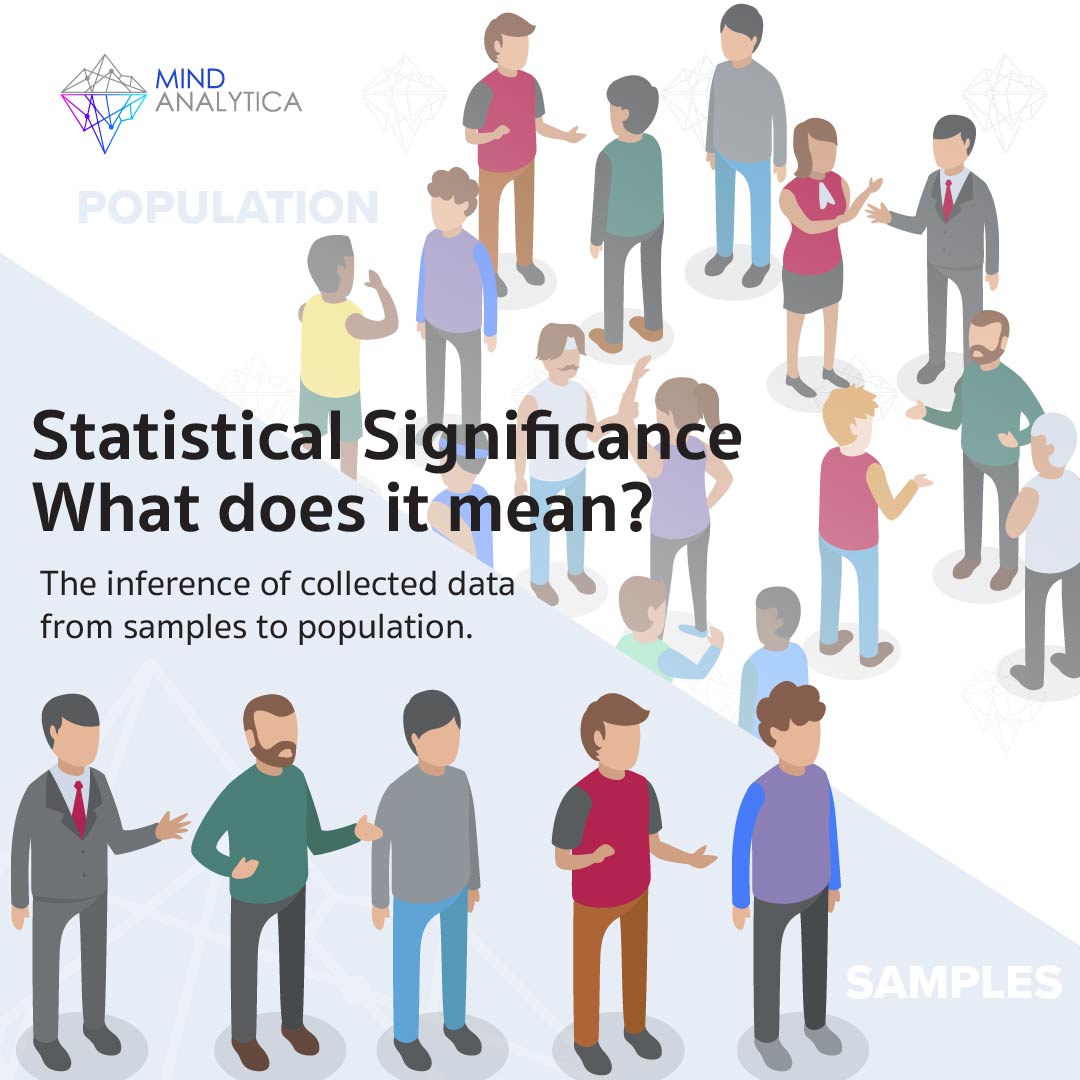Statistical Significance: What does it mean?
12 กันยายน 2566 - เวลาอ่าน 3 นาที
The inference of collected data from samples to population.
In research that employs statistical hypothesis testing, there is one phrase that is consistently encountered: "statistically significant difference" or "statistically significant relationship." What is the reason researchers and statisticians test and seek statistical significance, and does statistical significance mean the same as a regular difference or relationship? The answers can be found in this article.
To provide a brief understanding of statistical methods, consider the following examples: Researchers collecting data are well aware that gathering data from an entire "population" or every individual in the group of interest is often impractical. For instance, studying the relationship between attention from supervisors and job satisfaction. Researchers cannot gather data from every employee in an organization, past, present, and future. While researchers may be able to collect data from a limited number, such as a group of ten people or, with greater effort and resources, even a group of thousands, this is called a "sample." However, gathering data from every individual in such an organization is nearly impossible.
When it comes to analyzing data, if researchers have data from a sample of ten people to examine the relationship between two variables mentioned above, the results might reveal a relationship of some magnitude, though it may not be very strong and may only be applicable to the group of people from whom the data was collected. The numbers indicating the strength of the relationship may not be generalizable to all employees in the company.
Statisticians, therefore, devised a way to determine if, in the event that data from a sample has a relationship of a certain magnitude, the same relationship exists in the entire population. This is known as inferential statistics.
The term "statistical significance" is rooted in inferential statistics, explaining that data collected from a limited sample can be inferred to the entire population to determine if a relationship or difference truly exists.
However, this method can be quite complex. Statisticians use the following approach: In a population where no relationship between two variables is found, there is a certain likelihood of finding this relationship in a sample.
In the first hypothetical scenario, if it is discovered in the true population that the two variables have no relationship, then, when using statistical probability, it is possible to find that there is a chance that the relationship could be found in the data collected from the sample.
The reference statistic handles this case by proposing that if data from the population does not show a relationship, there is still a possibility of encountering a relationship in the data from the sample. Therefore, if the likelihood of finding a relationship in each sample is very low while a relationship is still found in one sample, in statistics, it is rejected that there is no relationship in the population, and it is accepted that the two variables in the population are related.
In the second hypothetical scenario, if the chance of encountering a relationship in each sample is very high, even though there is still a possibility that the two variables are unrelated in the population, this phenomenon is called "not statistically significant relationship" or "not significantly different." This means that while a relationship is found in one sample, in statistical terms, it is not certain that there is a relationship between the two variables in the population.
In summary, "statistically significant relationship" means that a relationship is found within the group of people being studied, but "not statistically significant" means that there may not be a relationship in the population, or there may not be a relationship in the area of interest. The issue of significance is thus a matter of linking the results obtained from collecting data from a sample to the population of interest.



